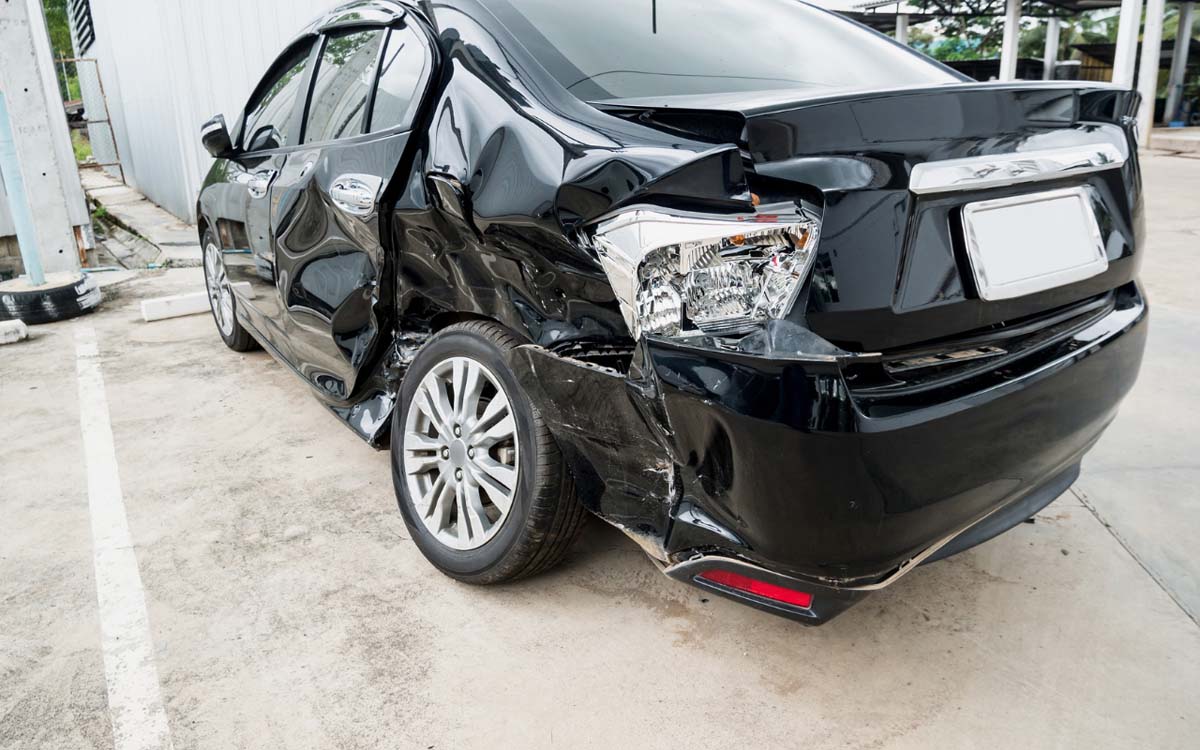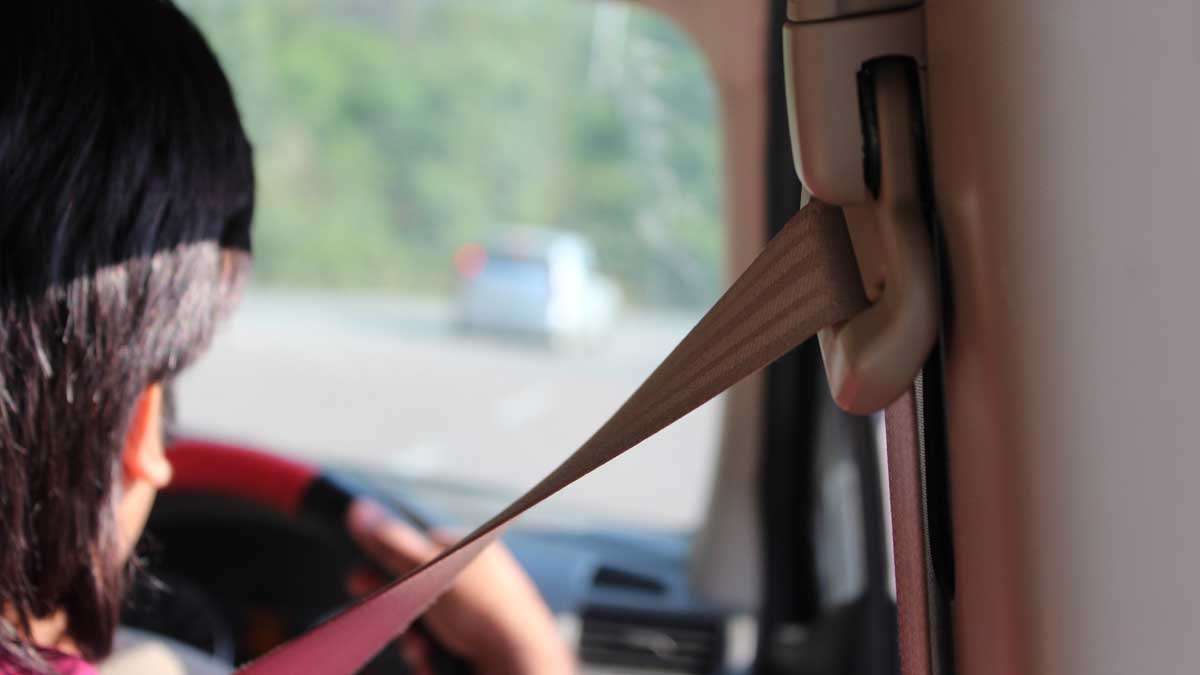If you have had the misfortune of being involved in an accident and believe that your car may be a write-off, then this is the guide for you.
This guide delves into the details of car write-offs in Australia, helping you understand the types of write-offs, how they are determined, what this means for you, and how you can best possible outcome after being involved in the write-off process.
What is a Write-Off?
Vehicles in Australia are deemed write-offs when the cost of repairs exceeds their overall value, or if repairing them would compromise safety. This determination is made following a thorough assessment by an insurer. To understand more about the necessary actions post-accident, especially in cases where you’re not at fault, read this informative piece on post-accident procedures.
There are a couple of different categorisations of write-offs:
What is a Statutory Write-Off
A statutory write-off refers to a vehicle so damaged that it can no longer be deemed safe for road use, irrespective of any potential repairs. These vehicles typically suffer from significant structural damage, such as compromised structural integrity or extensive corrosion, making any attempt at repairs unsafe.
In Australia, statutory write-offs are deregistered and removed permanently from the road. They usually end up in the scrap yard, with some parts recycled or repurposed.
Written-off vehicles are registered into the Written Off Vehicles Register (WOVR) so they are permanently barred from being re-registered.
What is a Repairable Write-Offs
Repairable write-offs are vehicles that are significantly damaged but can still be feasibly repaired. However, if you’re faced with this situation, it’s important to know how to get your vehicle back on the road after such an incident.
If the estimated restoration cost is more than the vehicle’s market value, insurance companies lean towards declaring it a repairable write-off. In certain Australian states, these vehicles can re-enter the roads post-repair, provided they meet stringent repair standards, pass comprehensive safety inspections, and are re-registered following the specific guidelines of the state the car will be registered.
No matter the type of write-off, Right2Drive can ease your journey. If you’re uncertain about your next steps and need a like-for-like accident replacement vehicle, find out how Right2Drive can support you during this challenging time by checking your eligibility.
What Happens if Your Car is Written-off and You Are Not at Fault?
- Seeking Compensation from the At-Fault Party: You may seek compensation directly from the at-fault driver. This involves obtaining their personal details at the accident scene and potentially taking legal action to recover the costs. This process can be difficult without the help of experts like Right2Drive who have helped over 250,000 people retrieve compensation from the at fault party.
- Using Your Own Insurance: If you have comprehensive car insurance, you can make a claim with your insurer. Most comprehensive policies cover accidents with uninsured drivers. Your insurer may then seek to recover costs from the at-fault party on your behalf. This method may increase your annual insurance premiums.
- Uninsured Motorist Extension: Some policies include an uninsured motorist extension, which can provide cover if you’re involved in an accident where the at-fault party is uninsured. However, this cover may have limits on the amount payable and again may increase premiums.
- Reporting to Authorities: It’s important to report the accident to the police, especially if the at-fault party is uninsured. This can provide official documentation that may assist in any legal or insurance proceedings.
- Consulting with Legal Professionals: Given the complexities involved when dealing with an uninsured at-fault party, seeking legal advice can be beneficial to understand your rights and the best course of action.
The Insurance Company’s Role in Declaring a Write-Off
The pivotal role in declaring a vehicle a write-off in Australia is played by insurance companies. This process begins with a thorough assessment of the damaged vehicle by a qualified assessor dispatched by the insurer.
The assessor’s mandate is to impartially evaluate the extent of the damage, the cost of repairs, and the feasibility of restoring the vehicle to its pre-accident condition.
The evaluation process is comprehensive, considering factors such as the severity of structural damage, the safety implications of potential repairs, the vehicle’s age, and the availability of spare parts.

Significant factors include:
- Severity of Damage: Major structural or mechanical damage, especially to the engine, transmission, or chassis, often leads to a vehicle being written off.
- Safety Considerations: If a car cannot be safely repaired, it will be classified as a statutory write-off.
- Age and Condition: Older cars or those in poor condition before the accident are more likely to be written off, as their lower value doesn’t justify high repair costs.
- History of Accidents: Vehicles with a history of previous accidents may be more susceptible to being written off after new damage.
A critical element in this decision-making process is the cost of repairs relative to the vehicle’s value. If the estimated repair costs surpass a certain percentage of the car’s market value (usually between 50% to 70%), the vehicle is likely to be declared a write-off. Additionally, the safety factor plays a crucial role; even if the repair costs are within economic bounds, any compromise to the vehicle’s safety can lead to its classification as a write-off.
The terms of the car owner’s insurance policy also significantly influence this decision. Some policies cover the vehicle’s retail value, while others may only cover the replacement value. This variance affects the payout and the decision to write off the vehicle.
Furthermore, the estimated salvage value of the vehicle is sometimes considered, with insurers calculating the potential revenue from salvaging against the costs of repair or replacement.
Financial Implications of Write-Offs
When a car is declared a write-off, the financial implications for the owner depend largely on their insurance coverage. For statutory write-offs, where the vehicle is deemed irreparable, the insurer typically takes over the car, selling it for parts or scrap. The owner may receive compensation based on the car’s market value before the accident, as stipulated in the insurance policy.
Repairable write-offs, while potentially salvageable, also involve a payout from the insurer, usually equating to the pre-accident value of the vehicle minus any salvage value.
However, insurance settlements can be complex. Factors like remaining premiums, insurance excess, and amount of unused registration and third-party cover are often considered in the final payout. For those with car loans, the settlement might not always cover the outstanding amount, this means gap insurance may be required to cover the shortfall.
Understanding the nuances of your insurance policy is crucial. For further information on your financial rights and entitlements following a not-at-fault accident, this article provides clear guidance on your entitlements.

Risks and Considerations for Repairable Write-Offs
Choosing to repair and re-register a repairable write-off involves several considerations.
Firstly, the cost of repairs can sometimes exceed initial estimates, especially if hidden damages emerge during the process. These vehicles also typically face a steep depreciation in resale value and may incur higher insurance premiums due to their history of significant damage.
Furthermore, potential safety issues should not be overlooked. Even after repairs, some vehicles may retain structural weaknesses or undiscovered faults, especially in cases of storm or flood damage. Prospective buyers of such vehicles must be vigilant, conducting thorough checks and considering the long-term reliability and safety of the car.
Do You Get Rego Back if Your Car is Written-off?
Getting a refund on your car rego after a write-off is possible across all states of Australia with varying eligibility conditions and processes. The table below provides a brief explanation but we provide additional details for each state in the next section.
| State | Eligibility for Refund | Process and Conditions | Other Information |
|---|---|---|---|
| NSW | Refund of unused portion | Must cancel registration before expiry; provide original letter for write-offs | If the car is written off, refund only with police/insurance letter |
| VIC | Refund of unused portion | Cancellation online or in person; insurance often claims refund for write-offs | Insurance claims refund for written-off vehicles |
| QLD | Refund of unused portion and insurance premium | Cancellation with fee; documentation required for write-offs | Insurance companies handle refunds for written-off vehicles |
| SA | Pro-rata refund of remaining registration fee | Online application; $20 admin fee deducted | – |
| TAS | Pro-rata refund of unused portion | Cancel before expiry; proof needed for write-offs | – |
| WA | Refund of unused portion | Cancel registration; proof of sale or vehicle disposal required | – |
| NT | Refund of unused portion | Cancel in person; proof of vehicle sale or disposal needed | – |
| ACT | Refund of unused portion | Cancel before expiry; documentation for write-offs required | – |
Getting a Refund on Your Rego in NSW
In New South Wales, you have the right to receive a refund for any unused portion of your vehicle registration. To be eligible for this refund, it’s necessary to cancel your existing registration before it expires. Be aware that a cancellation fee will be subtracted from the refund amount.
As per the guidelines set by the NSW Government, if your vehicle is declared a total loss, you can claim a registration refund. However, this is contingent upon presenting an original letter from either the police or your insurance provider at the service centre. This letter must detail the incident and specify the date it occurred. The same process applies if your vehicle has been stolen.
Information on cancelling your rego here: https://www.nsw.gov.au/driving-boating-and-transport/vehicle-registration/transferring-or-cancelling-registration/cancelling-your-registration
Getting a Refund on Your Rego in VIC
Victoria (VIC): Under VicRoads’ regulations, registration refunds are available in scenarios like selling an unregistered vehicle, theft or damage to the vehicle, interstate registration, or when a vehicle is not safe to drive or has been written off. The refund covers only the unused portion of your registration. Typically, for written-off vehicles, the insurance company claims the rego refund and includes it in the insurance payout. However, it’s advised to confirm this process with your insurance provider.
Information on cancelling your rego: https://www.vicroads.vic.gov.au/registration/renew-update-or-cancel/cancel-your-registration
Getting a Refund on Your Rego in QLD
Queensland (QLD): The Queensland Government provides registration refunds upon cancellation, which includes the unused portion of your registration and compulsory third-party insurance premium. A cancellation fee is also deducted. For written-off vehicles, insurance companies usually handle the rego refunds. The vehicle’s registration details need to be updated by your insurance provider, followed by completing a cancellation of registration form. Documentation confirming the accident date is necessary, like a police report and vehicle registration.
Information on cancelling your rego: https://www.qld.gov.au/transport/registration/cancel
Getting a Refund on Your Rego in SA
South Australia (SA): Car registration refunds are processed through an online application. This refund is based on the unused portion of the registration fee. A $20 administration fee is deducted from the refundable amount. This process is applicable when you sell or lose your vehicle.
Information on cancelling your rego: https://www.sa.gov.au/topics/driving-and-transport/registration/vehicle-registration/cancel
Getting a Refund on Your Rego in TAS
Tasmania (TAS): The registered operator needs to cancel the vehicle’s registration before its expiry. The refund is calculated pro rata, covering the unused portion of your registration. In the event of your vehicle being written off, you must provide written confirmation from your insurance company or a police report indicating the accident date to process the refund.
Information on cancelling your rego: https://www.transport.tas.gov.au/registration/renew_check_or_cancel/cancel_your_registration
Getting a Refund on Your Rego in NT
Northern Territory (NT): Vehicle registration can be cancelled for various reasons, including a vehicle being written off, stolen, no longer in use, or registered elsewhere. For eligible circumstances, a refund is available for the remaining registration period. The refund process involves returning the vehicle’s NT number plates, or a number plate surrender receipt, and completing a cancellation form.
An administration fee is deducted, and the refund amount is calculated based on the remaining months of registration. The process is initiated by filling out the application form and supplying necessary documentation such as a police report for stolen or written-off vehicles. The refund, typically processed within five working days, is sent to the applicant’s bank account once the application is approved.
Information on cancelling your rego: https://nt.gov.au/driving/rego/existing-nt-registration/cancel-or-refund-your-vehicle-registration
Getting a Refund on Your Rego in WA
Western Australia (WA): Vehicle owners can claim a registration refund for cars that are written off. When a vehicle is declared a write-off, either because it’s irreparably damaged or not safe for use on the roads, the owner is entitled to a refund for the unused portion of the registration. This refund process is streamlined and requires the owner to provide evidence of the write-off, typically through documentation from an insurance company or a police report in case of theft or an accident.
The refund amount is calculated based on the remaining registration period, with a focus on ensuring that owners receive a fair return for the unused portion of their registration fees. This system in WA underscores the commitment to supporting vehicle owners in unfortunate circumstances of vehicle loss.
Information on cancelling your rego: https://www.transport.wa.gov.au/licensing/vehicle-licence-cancellations.asp
Getting a Refund on Your Rego in ACT
In the Australian Capital Territory (ACT), you can cancel your vehicle registration for various reasons, such as if the vehicle is non-operational or if you no longer require ACT registration. To do this, you need to provide specific documents to Access Canberra, including an application form, proof of identity, and the vehicle’s numberplates or evidence of their surrender.
If your vehicle is written off, you must also submit a letter from your insurance company detailing the condition and date of the incident. Upon cancellation, you may be eligible for a refund on your registration and Motor Accident Injuries insurance fees, minus an administration fee, calculated based on the remaining days of your registration.
Information on cancelling your rego: https://www.accesscanberra.act.gov.au/driving-transport-and-parking/registration/cancelling-vehicle-registration





